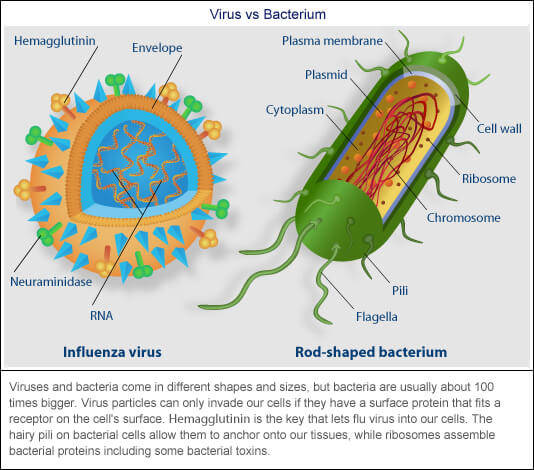How do bacteria differ from a virus?
1 Answer
The biggest difference between these two groups is that bacteria are considered living things and are made of cells, whereas viruses are not (and aren't made of cells).
Expanding on that, bacteria are unicellular organisms belonging to the domain Eubacteria but now called Bacteria and Archaea ,
They are ubiquitous on Earth and while they often have a bad reputation for causing disease, many are harmless to humans and some are very helpful to us (for example, the E. coli in your gut helps you digest food).
Viruses, on the other hand, are not in the organism classification scheme as they are not considered living things. They are not made of cells like organisms, instead they are generally composed of a protein coat surrounding genetic material (DNA or RNA). They do not respire the way organisms do, nor can they reproduce independently. Some have a lipid coat while others do not.
Here are a few other differences:
- Though bacteria are small, viruses are much smaller still. They are said to be ultramicroscopic. Bacteria can be more than 10 to 100 times bigger than viruses!
- Viruses are generally parasitic in some way. Most tend to damage their hosts. Some bacteria do this, but many do not.
- Bacteria reproduce by binary fission, while viruses must use host cells to create more viruses.
One more note-- viruses don't just attack large organisms. Viruses will even attack bacteria!
Here is an image that helps compare the structure of the two (note that it is not to scale- the virus should be much smaller):



